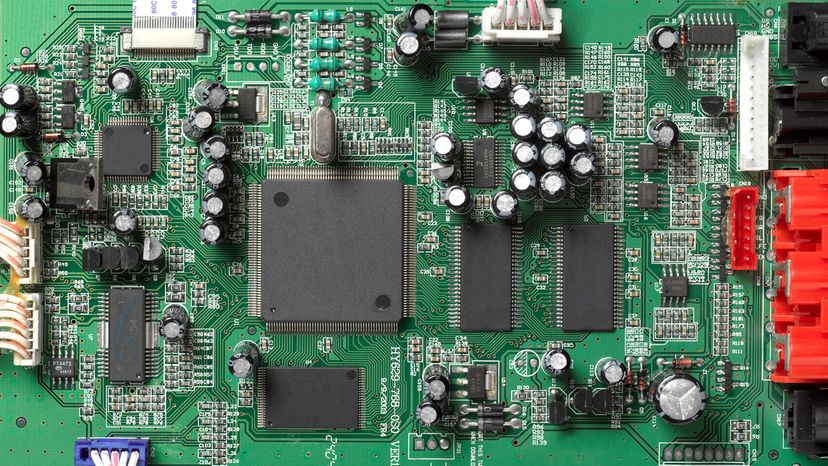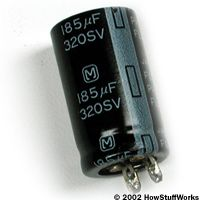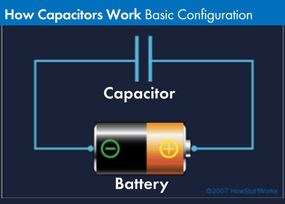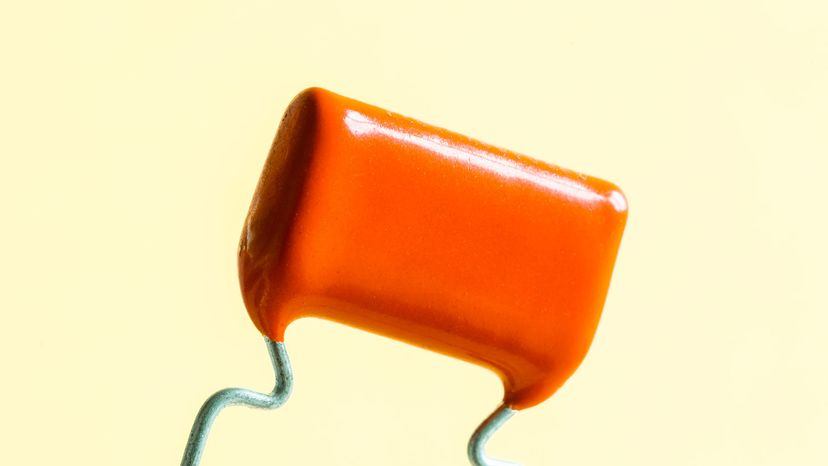
- +86 18120750932
- colin@xmsinuowei.com
- www.xmsinuowei.com

 Several capacitors, tiny cylindrical electrical components, are soldered to this motherboard. PETER DAZELEY/GETTY IMAGES
Several capacitors, tiny cylindrical electrical components, are soldered to this motherboard. PETER DAZELEY/GETTY IMAGES
In a way, a capacitor is a little like a battery. Although they work in completely different ways, capacitors and batteries both store electrical energy. If you have read How Batteries Work, then you know that a battery has two terminals. Inside the battery, chemical reactions produce electrons on one terminal and the other terminal absorbs them when you create a circuit. A capacitor is much simpler than a battery, as it can't produce new electrons — it only stores them. A capacitor is so-called because it has the "capacity" to store energy.
 A capacitor is a little like a battery.
A capacitor is a little like a battery.
In this article, we'll learn exactly what a capacitor is, what it does and how it's used in electronics.
Capacitors can be manufactured to serve any purpose, from the smallest plastic capacitor in your calculator, to an ultra capacitor that can power a commuter bus. Here are some of the various types of capacitors and how they are used.
Inside a capacitor, the terminals connect to two metal plates separated by a non-conducting substance, or dielectric. You can easily make a capacitor from two pieces of aluminum foil and a piece of paper (and some electrical clips). It won't be a particularly good capacitor in terms of its storage capacity, but it will work.
In theory, the dielectric can be any non-conductive substance. However, for practical applications, specific materials are used that best suit the capacitor's function. Mica, ceramic, cellulose, porcelain, Mylar, Teflon and even air are some of the non-conductive materials used. The dielectric dictates what kind of capacitor it is and for what it is best suited. Depending on the size and type of dielectric, some capacitors are better for high-frequency uses, while some are better for high-voltage applications.
Capacitor Circuit
When you connect a capacitor to a battery, here's what happens:
Once it's charged, the capacitor has the same voltage as the battery (1.5 volts on the battery means 1.5 volts on the capacitor). For a small capacitor, the capacity is small. But large capacitors can hold quite a charge. You can find capacitors as big as soda cans that hold enough charge to light a flashlight for a minute or more.
Even nature shows the capacitor at work in the form of lightning. One plate is the cloud, the other plate is the ground and the lightning is the charge releasing between these two "plates." Obviously, a capacitor that large can hold a huge charge!
Let's say you hook up a capacitor like this:
 This diagram shows how a capacitor connects to a battery.
This diagram shows how a capacitor connects to a battery.
Here you have a battery, a light bulb and a capacitor. If the capacitor is pretty big, what you will notice is that, when you connect the battery, the light bulb will light up as current flows from the battery to the capacitor to charge it up. The bulb will get progressively dimmer and finally go out once the capacitor reaches its capacity. If you then remove the battery and replace it with a wire, current will flow from one plate of the capacitor to the other. The bulb will light initially and then dim as the capacitor discharges, until it is completely out.
In the next section, we'll learn more about capacitance and take a detailed look at the different ways that capacitors are used.
Like a Water Tower
One way to visualize the action of a capacitor is to imagine it as a water tower hooked to a pipe. A water tower "stores" water pressure — when the water system pumps produce more water than a town needs, the excess is stored in the water tower. Then, at times of high demand, the excess water flows out of the tower to keep the pressure up. A capacitor stores electrons in the same way and can then release them later.
Farad
 A view of an electronic component called a film capacitor. A capacitor is a device that stores electrical energy in an electric field. JAVIER ZAYAS PHOTOGRAPHY/GETTY IMAGES
A view of an electronic component called a film capacitor. A capacitor is a device that stores electrical energy in an electric field. JAVIER ZAYAS PHOTOGRAPHY/GETTY IMAGES
A capacitor's storage potential, or capacitance, is measured in units called farads. A 1-farad capacitor can store one coulomb (coo-lomb) of charge at 1 volt. A coulomb is 6.25e18 (6.25 * 10^18, or 6.25 billion billion) electrons. One amp represents a rate of electron flow of 1 coulomb of electrons per second, so a 1-farad capacitor can hold 1 amp-second of electrons at 1 volt.
A 1-farad capacitor would typically be pretty big. It might be as big as a can of tuna or a 1-liter soda bottle, depending on the voltage it can handle. For this reason, capacitors are typically measured in microfarads (millionths of a farad).
To get some perspective on how big a farad is, think about this:
If it takes something the size of a can of tuna to hold a farad, then 10,080 farads is going to take up a LOT more space than a single AA battery! It's impractical to use capacitors to store any significant amount of power unless you do it at a high voltage.
Applications
The difference between a capacitor and a battery is that a capacitor can dump its entire charge in a tiny fraction of a second, where a battery would take minutes to completely discharge. That's why the electronic flash on a camera uses a capacitor — the battery charges up the flash's capacitor over several seconds, and then the capacitor dumps the full charge into the flash tube almost instantly. This can make a large, charged capacitor extremely dangerous — flash units and TVs have warnings about opening them up for this reason. They contain big capacitors that can potentially kill you with the charge they contain.
Capacitors are used in several different ways in electronic circuits:
Sometimes, capacitors are used to store charge for high-speed use. That's what a flash does. Big lasers use this technique as well to get very bright, instantaneous flashes.
Capacitors can also eliminate electric ripples. If a line carrying DC voltage has ripples or spikes in it, a big capacitor can even out the voltage by absorbing the peaks and filling in the valleys.
A capacitor can block DC voltage. If you hook a small capacitor to a battery, then no current will flow between the poles of the battery once the capacitor charges. However, any alternating current (AC) signal flows through a capacitor unimpeded. That's because the capacitor will charge and discharge as the alternating current fluctuates, making it appear that the alternating current is flowing.
In the next section, we'll look at the history of the capacitor and how some of the most brilliant minds contributed to its progress.
Source: howstuffworks

Service online